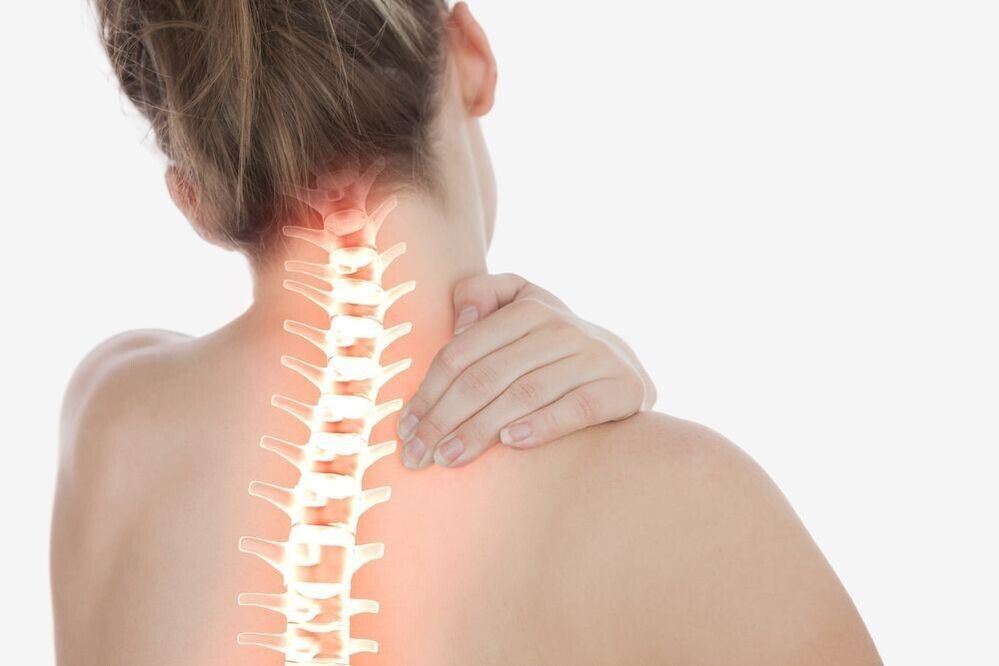
The spine, like any supporting structure, wears out over time. High static and dynamic loads and local overloading of segments, especially the mobile upper part, lead to a decrease in the ability of cartilage and nearby musculoskeletal structures to regenerate and gradually degenerate. At the age of 30-35, almost every person shows more or less signs of cervical osteochondrosis. And while it is not possible to stop the process of irreversible biological aging, it is quite possible to slow it down.
Diagnostics
Radiation imaging methods are used to objectively assess the condition and detect degenerative-dystrophic changes in the cervical spine:
- straight spondylography (X-ray contrastless examination in frontal, lateral and oblique projections)
- radiography with functional tests
- MSCT (multilayer computed tomography)
- MRI
- Survey spondylography of the upper spine is a traditional method of radiological diagnosis of cervical osteochondrosis. With its help, the condition of vertebrates is assessed, their shape, height, degree of deformation and relative displacement are determined. X-ray images show osteophytes, areas of illumination in the foci of liquefaction of bone tissue.
- Spondylography with functional tests is a study aimed at identifying the symptoms of movement disorders. X-ray is performed with constant maximum flexion and extension of the cervical spine.
- MSCT is a progressive alternative to X-rays. Bone structures, intervertebral discs, ligaments, the spinal canal, and the spinal cord are described in more detail in multilayered images.
- Magnetic resonance imaging allows for additional visualization of the cartilage layer and other soft tissues of the vertebral joints. The study was scheduled for severe neurological symptoms to differentiate cervical osteochondrosis from acute intervertebral hernia.
Treatment of cervical osteochondrosis
Treatment of cervical lumbar osteochondrosis aims to relieve pain and slow down the pathological process. It is carried out in two directions: to limit the impact of unfavorable factors and to suppress the mechanisms of disease development.
Therapeutic and prophylactic measures to minimize the effects of the affected agents include:
- rational choice of work furniture
- use of orthopedic mattresses and pillows
- hearing, vision and posture correction
- wear special fixation devices
- restriction of work activities related to prolonged stay in a compulsory position
- adequate physical activity
- proper nutrition
There are many different treatments designed to slow the development of the degenerative process.
Massage for cervical osteochondrosis
Massage procedures aimed at relieving inflammation and relieving pain are part of a set of mandatory therapeutic measures. The most effective types of neck massage:
- classic
- medical (textbook)
- point (acupuncture)
- vacuum (canned)
- apparatus
Massage techniques increase local blood and lymph circulation, accelerate tissue trophism, relieve muscle cramps, relieve neck tension, increase muscle tone and elasticity.
Orthopedic collars
Special orthopedic devices (Shants collar) are used to correct the cervical spine. Removable structures of various sizes, shapes and hardnesses limit the usual pathological condition of the head, control the movement of the neck, reduce pressure on spinal segments, warm and relax tense muscles and prevent further progression of the disease.
The neck collar for osteochondrosis is available in several modifications:
Soft curls made of medical foamor other porous hypoallergenic materials have a notch and holders for the lower surfaces of the jaw and neck. It is used to correct small irregularities in the upper part of the spine, to keep the spine in an anatomically correct position, and to relax the muscles of the shoulder girdle.
Pneumatic (inflatable) collarsIt is designed to prevent pain, smooth contraction and relieve compression of the vertebral artery.
Semi-rigid dressingsEquipped with metal attachments, it reliably stabilizes the intervertebral segments. Significantly limits range of motion & helps widen gaps between vertebral bodies
Rigid corsets made of durable plasticdesigned to completely immobilize the cervical spine in a neutral position. In the later stages of the disease, it is prescribed in conjunction with compression disorders.
The collar of cervical spine osteochondrosis is selected by the doctor taking into account age, anatomical features and stage of the degenerative process.
Manual therapy
Manual therapy aims to identify and eliminate blockages in the motor segments. Local dosing effect on the vertebral joints helps to normalize blood flow and blood supply to the brain, eliminate compression (pinching) and restore the normal function of nerve fibers. The special manipulations of the chiropractor allow for maximum relaxation, relieve muscle spasms, cervicogenic headaches and tension headaches caused by damage to the anatomical structures of the neck.
Acupuncture
Acupuncture, which involves the insertion of acupuncture needles into the bioactive points of the neck and shoulder blades, is aimed at restoring the disturbed energy balance. Acupuncture for cervical osteochondrosis has a strong anti-inflammatory and analgesic effect, stimulating the rapid contraction of sensitive nerve fibers and the release of endorphins and neurotransmitters. Thanks to this technique, numbness in the hands, dizziness, tinnitus improves blood flow and optimizes mobility.
Physiotherapy
Physiotherapy of degenerative pathologies of the spine aims to relieve pain and stimulate recovery processes. The greatest therapeutic effect is provided by:
- UFO
- ultrasound treatment
FAQ
How to help with acute pain with lumbar osteochondrosis?
In case of sudden sharp pain, the back should be straightened. This will immobilize the spasmodic muscles and move the load away from them. Then, if possible, put the patient on his back, put a pillow under the bent knees. You should take an analgesic and anti-inflammatory drug (NSAID) to reduce the pain. In addition, you can use an ointment or gel based on diclofenac or its analogues, or apply a cold compress (not more than 10 minutes). It is very important to relieve stress in the spine and see a doctor as soon as possible.
Is it possible to exercise for lumbar osteochondrosis?
Physical training for lumbar osteochondrosis is not only prohibited, but also recommended (except during periods of acute pain). However, you must be careful not to allow axial load on the spine and not to give up squatting, jumping and lifting weights. The set of exercises should be selected individually by a specialist.


























